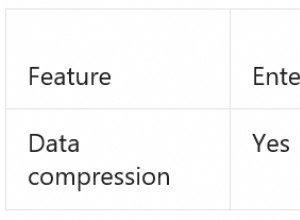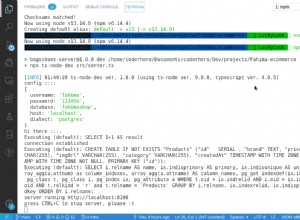Desafortunadamente, mi imaginación se volvió loca cuando hiciste esta pregunta. No sé si esta solución se considera más elegante. Sin embargo, estas clases son simples y fácilmente reutilizables, por lo que puede encontrarles un uso si no son satisfactorias. Verás que todo se une al final...
public class BinaryCloseable implements Closeable {
private Closeable first;
private Closeable last;
public BinaryCloseable(Closeable first, Closeable last) {
this.first = first;
this.last = last;
}
@Override
public void close() throws IOException {
try {
first.close();
} finally {
last.close();
}
}
}
BinaryCloseable es utilizado por CompositeCloseable :
public class CompositeCloseable implements Closeable {
private Closeable target;
public CompositeCloseable(Closeable... closeables) {
target = new Closeable() { public void close(){} };
for (Closeable closeable : closeables) {
target = new BinaryCloseable(target, closeable);
}
}
@Override
public void close() throws IOException {
target.close();
}
}
El ResultSetCloser cierra ResultSet objetos:
public class ResultSetCloser implements Closeable {
private ResultSet resultSet;
public ResultSetCloser(ResultSet resultSet) {
this.resultSet = resultSet;
}
@Override
public void close() throws IOException {
try {
resultSet.close();
} catch (SQLException e) {
throw new IOException("Exception encountered while closing result set", e);
}
}
}
El PreparedStatementCloser cierra PreparedStatement objetos:
public class PreparedStatementCloser implements Closeable {
private PreparedStatement preparedStatement;
public PreparedStatementCloser(PreparedStatement preparedStatement) {
this.preparedStatement = preparedStatement;
}
@Override
public void close() throws IOException {
try {
preparedStatement.close();
} catch (SQLException e) {
throw new IOException("Exception encountered while closing prepared statement", e);
}
}
}
El ConnectionCloser cierra Connection objetos:
public class ConnectionCloser implements Closeable {
private Connection connection;
public ConnectionCloser(Connection connection) {
this.connection = connection;
}
@Override
public void close() throws IOException {
try {
connection.close();
} catch (SQLException e) {
throw new IOException("Exception encountered while closing connection", e);
}
}
}
Ahora refactorizamos su InputStream original idea en:
public class ClosingInputStream extends InputStream {
private InputStream stream;
private Closeable closer;
public ClosingInputStream(InputStream stream, Closeable closer) {
this.stream = stream;
this.closer = closer;
}
// The other InputStream methods...
@Override
public void close() throws IOException {
closer.close();
}
}
Finalmente, todo se une como:
new ClosingInputStream(
stream,
new CompositeCloseable(
stream,
new ResultSetCloser(resultSet),
new PreparedStatementCloser(statement),
new ConnectionCloser(connection)
)
);
Cuando este ClosingInputStream close() se llama al método, esto es efectivamente lo que sucede (con el manejo de excepciones omitido en aras de la claridad):
public void close() {
try {
try {
try {
try {
// This is empty due to the first line in `CompositeCloseable`'s constructor
} finally {
stream.close();
}
} finally {
resultSet.close();
}
} finally {
preparedStatement.close();
}
} finally {
connection.close();
}
}
Ahora puede cerrar tantos Closeable objetos como quieras.




